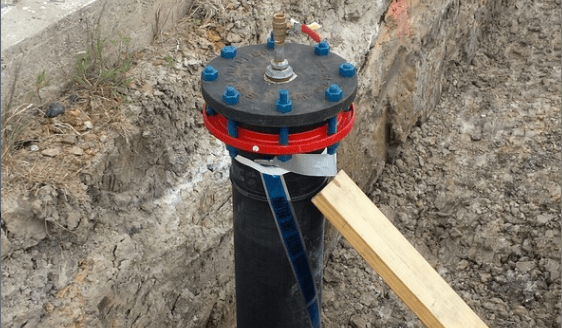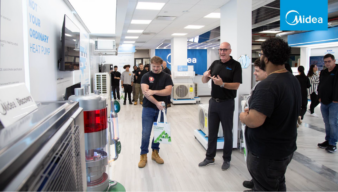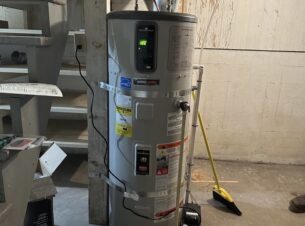 The midstream industry is completely unique; so much so that no terminal is the same. The distinctive needs of each location make fire protection in a midstream terminal more difficult than a typical facility. Because of the varied needs in midstream facilities, properly designed and installed fire protection is important. Storage areas, pumping stations, processing areas, loading facilities, and just about every other part of the terminal have inherent fire hazards.
The midstream industry is completely unique; so much so that no terminal is the same. The distinctive needs of each location make fire protection in a midstream terminal more difficult than a typical facility. Because of the varied needs in midstream facilities, properly designed and installed fire protection is important. Storage areas, pumping stations, processing areas, loading facilities, and just about every other part of the terminal have inherent fire hazards.
In interviews with Daryl Bessa, former sprinkler fitter, foreman, and project superintendent; Scott Jarvis, former fire sprinkler foreman; and Chuck Rogers, regional manager, they explain the trends in fire protection errors that they have seen in their combined 73 years of experience which can inhibit the effectiveness or, in some cases, the use of the terminal’s fire protection. The issues discussed below are real fire protection issues that these employees in the midstream fire protection field have seen when they had been called to investigate improperly working fire protection.
Error #1: Undersized Pipe
If a fire event occurred in a midstream terminal with undersized pipe, the fire protection system may not be able to provide the correct volume of water or water/foam mixture at the required pressures to work effectively. A properly designed fire protection system takes expertise and a qualified fire protection contractor. The contractor needs to calculate what pipe size is needed in order to provide the correct water pressure and density to allow the fire protection system to work successfully and contain or extinguish a fire.
Error #2: Unqualified Sprinkler Contractors
Some Midstream companies act as their own Authority Having Jurisdiction (AHJs). Because of storage area fire protectionthis, they can accept whatever fire protection systems they choose. This means there is a good chance that the fire protection is not in accordance with NFPA and may not work correctly if a fire was to occur. Tank manufacturers and Midstream facilities often do not use and configure equipment in accordance with the manufactures listing requirements. An example of this is the use of HDPE pipe, heavy wall pipe. While this is fine for underground use, if it is even slightly above ground, it will melt and render the fire protection useless. However, the reality is, often HDPE is seen above ground and poses a melting risk. A second example is improperly configured foam proportioning equipment. A qualified fire protection contractor with experience in protecting Midstream terminals ensures the proper use of equipment and that it is in accordance with their listing when designing and installing the fire protection system.
 Another issue with unqualified fire protection contractors is the varied fire hazards throughout terminals. Each area – processing areas, storage facilities, and pumping stations – has its own unique hazards and requires different types of fire protection. For instance, in gas processing areas, deluge fire protection systems are preferred while storage areas may use foam/water systems. Each area of the midstream facility needs fire protection designed for its exact purpose. This requires midstream-specific contractor experience.
Another issue with unqualified fire protection contractors is the varied fire hazards throughout terminals. Each area – processing areas, storage facilities, and pumping stations – has its own unique hazards and requires different types of fire protection. For instance, in gas processing areas, deluge fire protection systems are preferred while storage areas may use foam/water systems. Each area of the midstream facility needs fire protection designed for its exact purpose. This requires midstream-specific contractor experience.
In addition to the issue of a possible fire protection malfunction, many midstream terminals require a Federal Transportation Worker Identification Card. Some are regulated by the Department of Transportation (DOT). If the fire protection contractor is not DOT pre-qualified, they may not meet code requirements.
Error #3: No Means to Test Fire Protection
Once fire protection is installed, it needs to be tested in accordance with NFPA requirements to ensure that it is working properly. A fire protection contractor that is unfamiliar with Midstream terminals will not only install fire protection systems that do not meet the requirements of NFPA but they will not provide a means to test the system once it has been placed in service. Without the ability to isolate the system, it is impossible to test the fire protection without shutting down the equipment and putting in dams to protect equipment from water. When choosing a fire protection contractor, be sure they have the knowledge to properly design the systems with a means for testing.
The midstream sector is complicated and requires a contractor that is experienced in that industry. Fire is not something to be played with. By not taking fire protection seriously in midstream facilities, terminals can put their production and, most importantly, their employees at risk.
 Sarah Block is the marketing director for F.E. Moran Contracting and Services, which has been providing life safety and comfort services to the commercial, industrial, residential, and institutional markets for five decades.
Sarah Block is the marketing director for F.E. Moran Contracting and Services, which has been providing life safety and comfort services to the commercial, industrial, residential, and institutional markets for five decades.




Join the conversation: